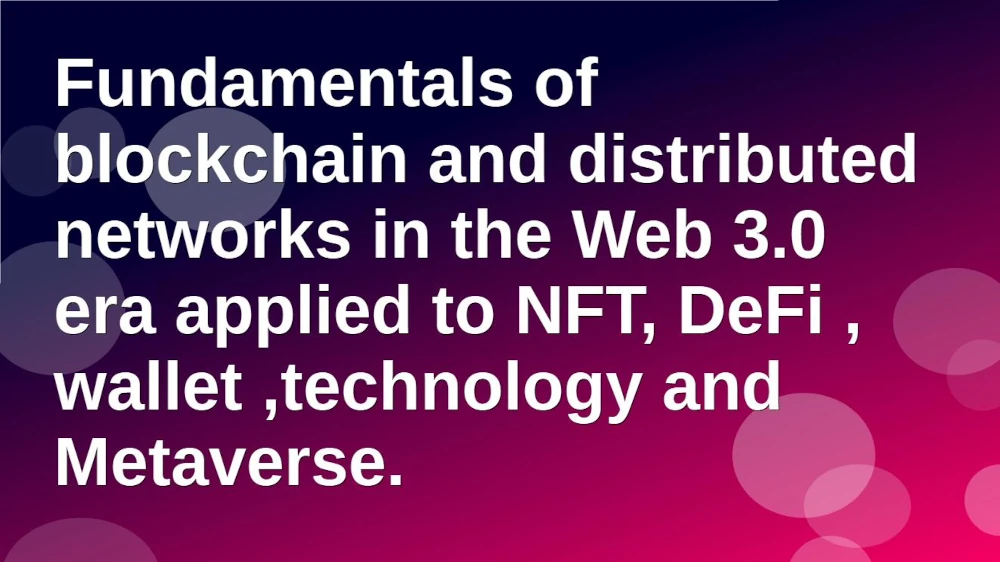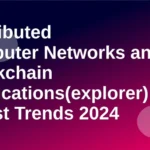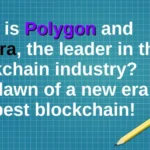Fundamentals of blockchain and distributed networks in the Web 3.0 era applied to NFT, DeFi , wallet ,technology and Metaverse.
2024年11月18日

Let’s take a look at the basics of distributed networks and blockchains together.
What is a distributed network?
A distributed network is a network in which data and resources are not concentrated in one place, but are distributed across multiple computers (nodes). This makes the entire system more robust and reliable.
Features and specific examples
Redundancy
- Data is stored in multiple locations, so it is less likely to be lost even if a fault occurs. For example, cloud storage services such as Google Drive and Dropbox ensure data security by storing data on multiple servers.
Scalability
- The capacity and performance of the network can be easily expanded by adding new nodes. For example, Netflix uses servers distributed around the world to deliver videos, and can respond smoothly even when the number of users increases.
Security
- It becomes difficult for attackers to control the entire system. For example, BitTorrent divides files into small parts and shares them among multiple users, preventing attacks on the central server.
What is a blockchain?
A blockchain is a type of distributed network that groups transaction data into units called blocks and links them together in a chain. Each block contains the hash value of the previous block, making it extremely difficult to tamper with.
Features and specific examples
Transparency
- All transactions are public and can be verified by anyone, making it easier to detect fraudulent activity. For example, the Bitcoin transaction history is highly transparent because anyone can check it.
Invariance
- Once recorded, data cannot be changed, so data reliability is increased. For example, recording land ownership on the blockchain prevents fraudulent rewriting.
Decentralisation
- There is no central administrator, and data is managed across the entire network, which improves system reliability. For example, Ethereum automates contracts without a central administrator by executing smart contracts on a decentralised network.
How a blockchain works
The flow in which blockchain functions
- Transaction generation: A user generates a transaction, for example, when sending Bitcoin.
- Transaction verification: Nodes in the network verify the legitimacy of transactions. This confirms that the transaction is legitimate. For example, Bitcoin miners verify transactions.
- Block generation: Verified transactions are grouped together into blocks. Multiple transactions are collected into one block. For example, new transactions are added to a Bitcoin block approximately every 10 minutes.
- Adding a block: A new block is added to the existing chain, which allows the history of transactions to be recorded continuously. For example, a new Bitcoin block is added to the chain.
- Updating the chain: The new chain is shared across the network, which allows all nodes to have the latest information about transactions. For example, all Bitcoin nodes receive the new block and update their chains.
Applications of the blockchain
Areas where blockchain technology is being applied
- Cryptocurrencies: Digital currencies such as Bitcoin and Ethereum. This enables transactions to be carried out without the need for a central bank. For example, you can use Bitcoin to make international money transfers.
- Smart contracts: Contracts that are automatically executed. For example, a contract that automatically makes a payment when certain conditions are met. Ethereum smart contracts are used for things like automatic insurance payments.
- Supply chain management: Improved transparency and traceability of logistics. You can track where goods come from and how they are distributed. For example, IBM‘s Food Trust manages the food supply chain using blockchain.
- Digital identity: Secure management of personal information. It is possible to securely manage personal data and prevent unauthorised access. For example, a digital ID system using blockchain can easily verify the identity of a person when opening a bank account or using online services.
Summary
Distributed networks and blockchain are important technologies in today’s digital society. Understanding the basics of these technologies will help you to understand more advanced applications and technological developments.
And that’s the end of our beginner’s guide to blockchain and distributed networks.
Thank you for reading!
Please look forward to our next instalment of applied knowledge!

